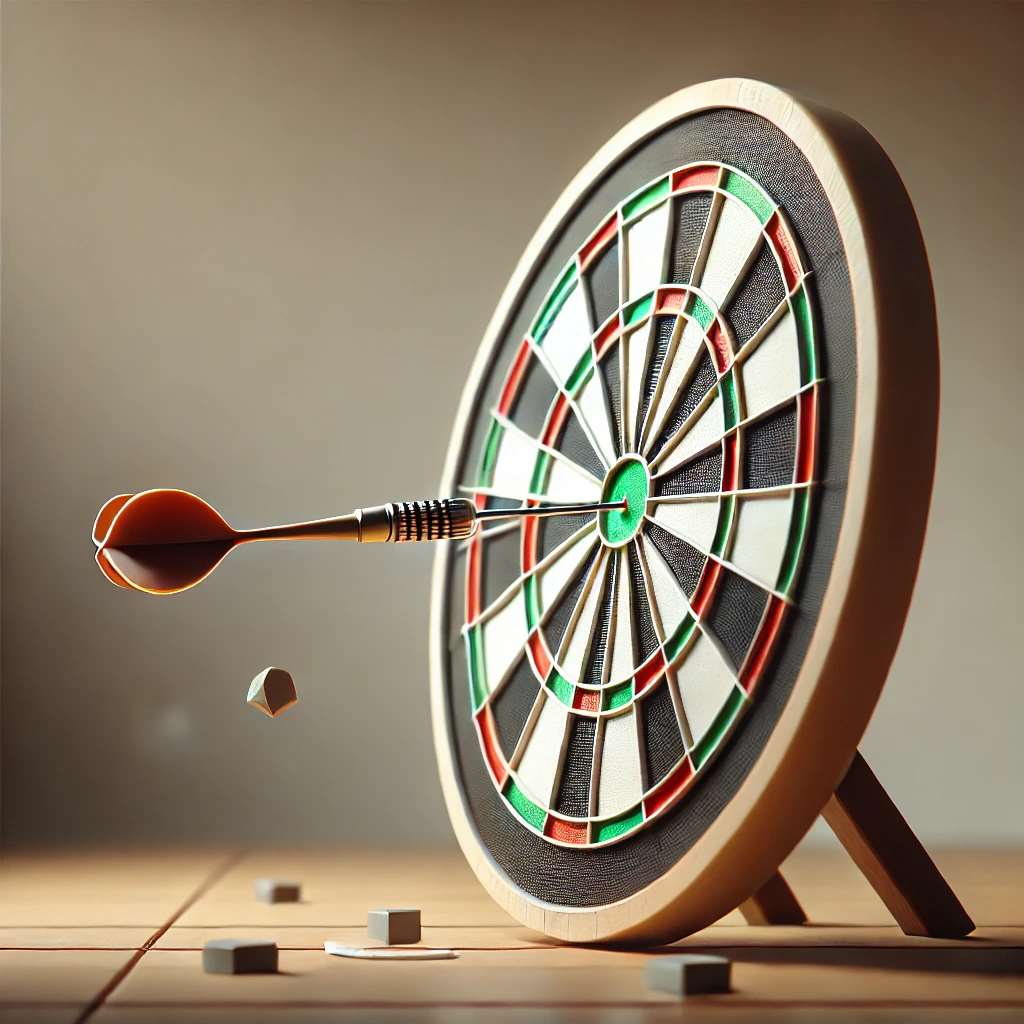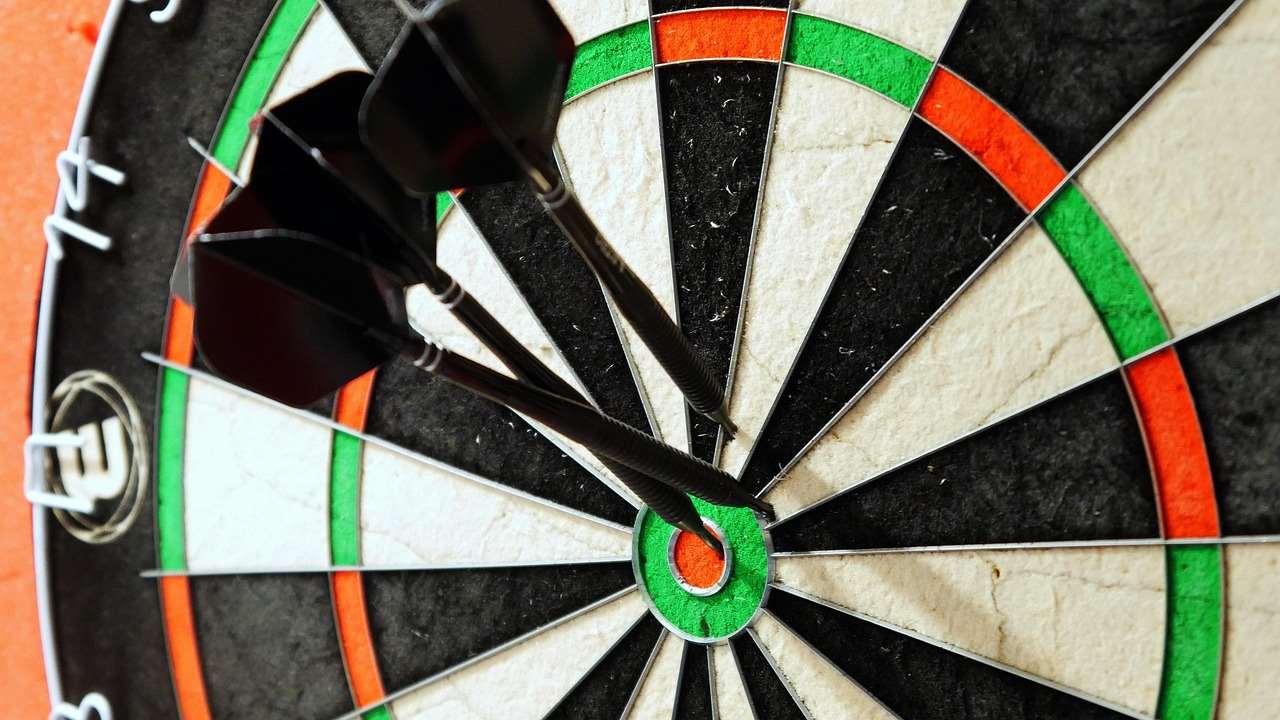Adapting rules for speed darts challenges is crucial for making the game accessible, exciting, and fair for players of all skill levels. This article explores practical ways to modify and customize speed darts rules to suit different player groups and playing environments, enhancing both the fun and competitive aspects of the game. You’ll learn how to adjust scoring systems, time limits, and handicap methods to create unique and engaging speed darts experiences.
⚠️ Still Using Pen & Paper (or a Chalkboard)?! ⚠️
Step into the future! The Dart Counter App handles all the scoring, suggests checkouts, and tracks your stats automatically. It's easier than you think!
Try the Smart Dart Counter App FREE!Ready for an upgrade? Click above!
Understanding the Core of Speed Darts
Speed darts, at its heart, is about accuracy under pressure. It takes the core mechanics of traditional darts and adds a time-sensitive element. This pressure can be thrilling for experienced players, but overwhelming for beginners. Before adapting rules for speed darts challenges, it’s important to understand what makes the game tick. The primary goals are usually to score the most points within a set time limit or to be the first to reach a target score. Factors like throwing stance, grip, and release are still vital, but now they are performed against the clock. Consider the purpose of the adaptation. Is it to level the playing field, increase the challenge, or simply make the game more enjoyable for a particular group?
Often, traditional 501 is used as the base for speed darts, but the clock is always ticking. The time constraints force players to make quick decisions, often prioritizing the high-scoring targets.

Essential Rule Modifications for Speed Darts Challenges
When adapting rules for speed darts challenges, several key areas can be adjusted to create a more balanced and entertaining game.
- Time Limits: This is the most obvious adjustment. Experiment with different time limits per round or match. Shorter times increase the pressure, while longer times allow for more strategic play.
- Scoring Systems: Simplify scoring by focusing only on key areas of the board (e.g., treble 20, double 20, bullseye). Alternatively, you could introduce bonus points for consecutive hits in the same target.
- Handicaps: Utilize handicap systems to level the playing field between players of varying skill levels. Giving less skilled players a head start in points or extra time can make the game more competitive.
- Dart Count: Limit the number of darts thrown per turn. This can add a layer of strategy, forcing players to make each throw count.
- Target Score Adjustments: Modify the target score to make the game shorter or longer, depending on the desired intensity.
Remember, the best rules for speed darts are those that promote both competition and enjoyment. Try adjusting only one variable at a time to assess the impact on the game. You might consider reading about How to make darts fairer with handicap rules to help give less skilled players a fighting chance.
Implementing Handicap Systems in Speed Darts
Handicaps are essential for creating fair and engaging speed darts competitions between players of different abilities. Here are some popular handicap methods:
- Point Handicaps: Give weaker players a head start in points. The amount of the handicap can be adjusted based on the skill gap between players.
- Time Handicaps: Grant weaker players extra time to complete their throws. This allows them to take a little longer to aim and improve their accuracy.
- Dart Handicaps: Allow weaker players to throw an extra dart per round. This provides them with an additional opportunity to score.
- Target Handicaps: Assign weaker players easier targets to aim for, such as the outer ring instead of the treble.
When implementing handicap systems, it’s crucial to test and adjust them to ensure they are fair and balanced. Consider running trial games to fine-tune the handicap amounts. Transparency is key, so ensure all players understand how the handicap system works before the competition begins.
Introducing handicaps can significantly improve the enjoyment of the game, particularly for beginners who might otherwise be discouraged by the skill gap. This is particularly applicable if you are Modifying rules for mixed-level dart players.

Adapting Speed Darts for Different Skill Levels
Adapting rules for speed darts challenges isn’t just about handicaps; it’s about creating an experience that is challenging yet achievable for everyone.
Beginner Level
- Increase the time limit per round.
- Simplify the scoring system, focusing on the bullseye and 20s.
- Allow multiple attempts to hit the target before moving on.
- Provide coaching and tips throughout the game.
Intermediate Level
- Introduce more complex scoring combinations.
- Decrease the time limit slightly.
- Encourage strategic aiming and planning.
- Implement a basic handicap system.
Advanced Level
- Enforce strict time limits.
- Utilize the full range of scoring targets.
- Introduce challenging variations and objectives.
- Implement a sophisticated handicap system.
By carefully adjusting the rules and challenges, you can create a speed darts experience that caters to the specific skill level of each player, promoting engagement and improvement. Don’t forget to explain some Basic Darts Fundamentals for Beginners before starting!
Incorporating Fun and Creative Rule Variations
To keep speed darts fresh and exciting, consider incorporating fun and creative rule variations. These variations can add a new layer of challenge and entertainment to the game.
- Around the Clock: Players must hit each number on the board in sequence, starting with 1 and ending with 20, within a set time limit.
- Killer: Each player is assigned a number. To become a “killer,” they must hit their number three times. Once a killer, they can target other players’ numbers. If a player’s number is hit three times by a killer, they are out of the game.
- Shanghai: Players aim for the single, double, and treble of a specific number in a single round.
- Cricket: Players must hit specific numbers (typically 20, 19, 18, 17, 16, 15, and the bullseye) three times each to “close” them. Once a number is closed, only players who have closed it can score on it.
These variations can be combined with speed darts to create a truly unique and engaging experience. Consider the skill level of the players when choosing variations, and be sure to explain the rules clearly before starting the game.

Optimizing the Playing Environment for Speed Darts
The playing environment can significantly impact the enjoyment and challenge of speed darts. Here are some tips for optimizing the environment:
- Lighting: Ensure adequate lighting on the dartboard to improve visibility and accuracy.
- Space: Provide sufficient space for players to stand and throw comfortably.
- Dartboard Placement: Position the dartboard at the correct height and distance from the throwing line.
- Noise Levels: Minimize distractions and noise to allow players to focus.
- Temperature: Maintain a comfortable temperature to prevent fatigue and improve performance.
Also, consider the accessibility of the space. Can everyone participate comfortably and safely? These seemingly small details can make a big difference in the overall experience, especially when the pressure of the clock is on. You might even need to consider Adapting darts rules for small spaces: tips and tricks if space is an issue.
Using Technology to Enhance Speed Darts Challenges
Technology can be a valuable tool for enhancing speed darts challenges. Here are some ways to incorporate technology into your game:
- Timers: Use digital timers to accurately track time limits and countdowns.
- Scoring Apps: Employ dart scoring apps to simplify scorekeeping and track player statistics.
- Video Replay: Utilize video replay to review throws and analyze performance.
- Online Platforms: Join online dart communities and participate in virtual speed darts competitions.
These technological enhancements can add a new level of excitement and engagement to speed darts. They can also provide valuable data for tracking progress and improving performance.

Ensuring Fair Play and Sportsmanship
Maintaining fair play and sportsmanship is crucial in any competitive game, including speed darts. Here are some guidelines to promote ethical behavior:
- Enforce the Rules: Ensure all players understand and adhere to the established rules.
- Resolve Disputes Fairly: Address any disagreements or disputes in a calm and impartial manner.
- Promote Respect: Encourage players to treat each other with respect, regardless of skill level.
- Celebrate Successes: Acknowledge and celebrate the achievements of all players.
- Encourage Improvement: Provide constructive feedback and support to help players improve their skills.
By fostering a culture of fair play and sportsmanship, you can create a positive and enjoyable speed darts experience for everyone. And, of course, make sure everyone knows the rules for Fun dart game variations with modified rules!
Sample Speed Darts Challenge Rule Sets
To get you started, here are a couple of sample rule sets for different speed darts challenges:
Beginner Speed Darts Challenge
- Time Limit: 60 seconds per round
- Scoring: Single 20 = 1 point, Double 20 = 2 points, Treble 20 = 3 points, Bullseye = 5 points
- Handicap: Weaker players receive a 10-point head start
Advanced Speed Darts Challenge
- Time Limit: 30 seconds per round
- Scoring: Standard dart scoring
- Handicap: Players are ranked based on skill level, and handicaps are assigned accordingly
These are just examples, so feel free to experiment and customize them to create your own unique speed darts challenges!

Conclusion
**Adapting rules for speed darts challenges** is the key to creating an engaging and inclusive experience for players of all skill levels. By carefully adjusting time limits, scoring systems, handicap methods, and playing environments, you can craft unique and exciting competitions that promote both skill development and enjoyment. Remember to prioritize fair play, sportsmanship, and clear communication to ensure everyone has a positive experience. So, gather your friends, customize your rules, and get ready for some fast-paced darting action! Are you ready to hit the board and put your speed darts skills to the test? Share this article and start planning your next challenge today!
Hi, I’m Dieter, and I created Dartcounter (Dartcounterapp.com). My motivation wasn’t being a darts expert – quite the opposite! When I first started playing, I loved the game but found keeping accurate scores and tracking stats difficult and distracting.
I figured I couldn’t be the only one struggling with this. So, I decided to build a solution: an easy-to-use application that everyone, no matter their experience level, could use to manage scoring effortlessly.
My goal for Dartcounter was simple: let the app handle the numbers – the scoring, the averages, the stats, even checkout suggestions – so players could focus purely on their throw and enjoying the game. It began as a way to solve my own beginner’s problem, and I’m thrilled it has grown into a helpful tool for the wider darts community.